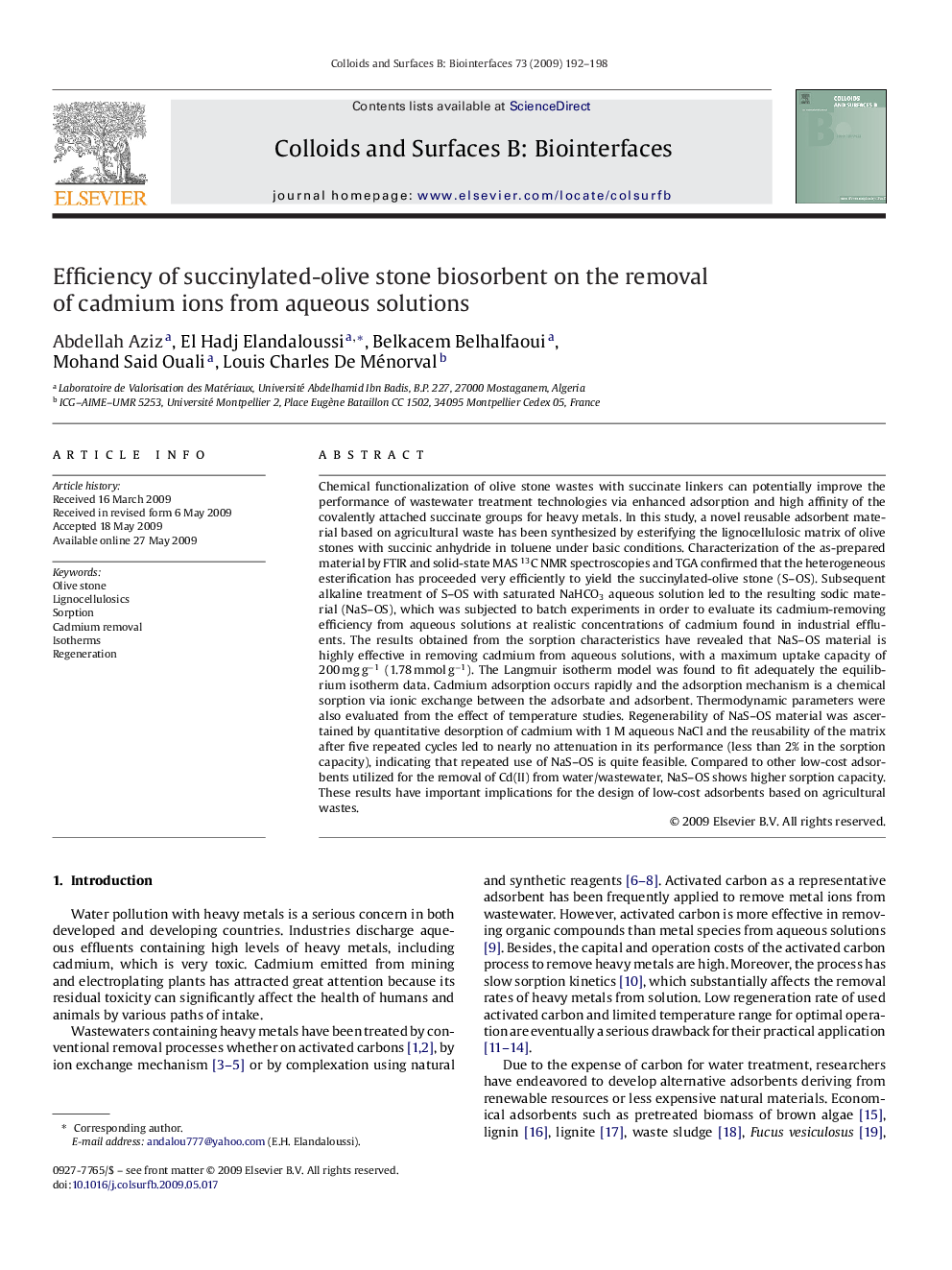| کد مقاله | کد نشریه | سال انتشار | مقاله انگلیسی | نسخه تمام متن |
|---|---|---|---|---|
| 602118 | 879964 | 2009 | 7 صفحه PDF | دانلود رایگان |

Chemical functionalization of olive stone wastes with succinate linkers can potentially improve the performance of wastewater treatment technologies via enhanced adsorption and high affinity of the covalently attached succinate groups for heavy metals. In this study, a novel reusable adsorbent material based on agricultural waste has been synthesized by esterifying the lignocellulosic matrix of olive stones with succinic anhydride in toluene under basic conditions. Characterization of the as-prepared material by FTIR and solid-state MAS 13C NMR spectroscopies and TGA confirmed that the heterogeneous esterification has proceeded very efficiently to yield the succinylated-olive stone (S–OS). Subsequent alkaline treatment of S–OS with saturated NaHCO3 aqueous solution led to the resulting sodic material (NaS–OS), which was subjected to batch experiments in order to evaluate its cadmium-removing efficiency from aqueous solutions at realistic concentrations of cadmium found in industrial effluents. The results obtained from the sorption characteristics have revealed that NaS–OS material is highly effective in removing cadmium from aqueous solutions, with a maximum uptake capacity of 200 mg g−1 (1.78 mmol g−1). The Langmuir isotherm model was found to fit adequately the equilibrium isotherm data. Cadmium adsorption occurs rapidly and the adsorption mechanism is a chemical sorption via ionic exchange between the adsorbate and adsorbent. Thermodynamic parameters were also evaluated from the effect of temperature studies. Regenerability of NaS–OS material was ascertained by quantitative desorption of cadmium with 1 M aqueous NaCl and the reusability of the matrix after five repeated cycles led to nearly no attenuation in its performance (less than 2% in the sorption capacity), indicating that repeated use of NaS–OS is quite feasible. Compared to other low-cost adsorbents utilized for the removal of Cd(II) from water/wastewater, NaS–OS shows higher sorption capacity. These results have important implications for the design of low-cost adsorbents based on agricultural wastes.
Journal: Colloids and Surfaces B: Biointerfaces - Volume 73, Issue 2, 15 October 2009, Pages 192–198